Themed collection 2019 Green Chemistry Hot Articles

(Non-)Kolbe electrolysis in biomass valorization – a discussion of potential applications
The bio-availability of organic acids as platform chemicals and the potential of electrochemistry to directly integrate renewable energy into new value chains drive (Non-)Kolbe electrolysis to become an attractive tool in future electro-bio-refinery.
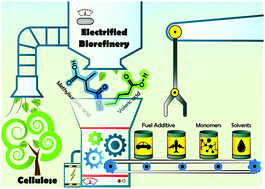
Green Chem., 2020,22, 286-301
https://doi.org/10.1039/C9GC03264A
The periodic table of the elements of green and sustainable chemistry
Achieving a sustainable future will only be possible through the intersection of the best science and technology in combination with the societal, economic, policy, cultural, moral, and ethical ecosystem.
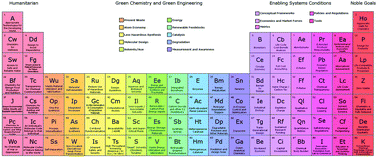
Green Chem., 2019,21, 6545-6566
https://doi.org/10.1039/C9GC01293A
Continuous manufacturing – the Green Chemistry promise?
We review Green Chemistry advances resulting when transitioning to continuous manufacturing with focus on Green Chemistry elements inherent in flow chemistry and related separation processes.
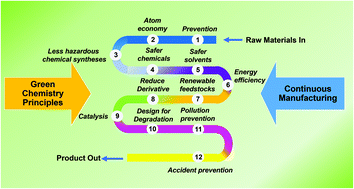
Green Chem., 2019,21, 3481-3498
https://doi.org/10.1039/C9GC00773C
Advancements in the treatment and processing of electronic waste with sustainability: a review of metal extraction and recovery technologies
This review highlights the current status of e-waste recycling and provides insights on metal recovery from e-waste via green chemistry.
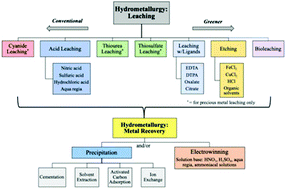
Green Chem., 2019,21, 919-936
https://doi.org/10.1039/C8GC03688H
A ‘Trojan horse strategy’ for the development of a renewable leather tanning agent produced via an AlCl3-catalyzed cellulose depolymerization
The oligosaccharides from AlCl3-catalyzed cellulose depolymerization improve penetration of Al ion into the skin matrix for further crosslinking reaction.
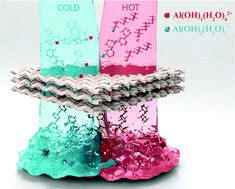
Green Chem., 2020,22, 316-321
https://doi.org/10.1039/C9GC03538A
Boosting the utilization efficiency of glucose via a favored C–C coupling reaction
The efficient utilization of renewable glucose has enormous potential to reduce the excessive dependence on fossil resources, but remains challenging owing to the inevitable formation of undesirable humins and multistep processes.

Green Chem., 2019,21, 6236-6240
https://doi.org/10.1039/C9GC02987G
Visible-light-mediated photoredox decarbonylative Minisci-type alkylation with aldehydes under ambient air conditions
Photocatalytic aerobic decarbonylative C–C coupling/alkylations of N-heteroarenes with aldehydes have been disclosed for the first time.
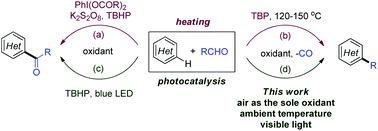
Green Chem., 2019,21, 5512-5516
https://doi.org/10.1039/C9GC03008E
A biocatalytic cascade for the conversion of fatty acids to fatty amines
A mild, biocatalytic alternative to the conventional amination of fatty acids through a one-pot tandem cascade performed by a carboxylic acid reductase (CAR) and a transaminase (ω-TA).
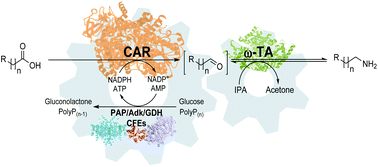
Green Chem., 2019,21, 4932-4935
https://doi.org/10.1039/C9GC02260K
Catalytic oxidative dehydrogenation of malic acid to oxaloacetic acid
Here we report the oxidative dehydrogenation of malic acid to oxaloacetic acid, a key precursor in the fabrication of amino acids, over Pt–Bi/C catalysts.
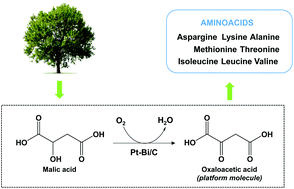
Green Chem., 2019,21, 4604-4608
https://doi.org/10.1039/C9GC01768B
Boosting the activity of catalytic oxidation of 5-hydroxymethylfurfural to 2,5-diformylfuran over nitrogen-doped manganese oxide catalysts
Doping of nitrogen into MnO2 is employed as an efficient catalyst for the catalytic oxidation of HMF to DFF under an oxygen atmosphere.
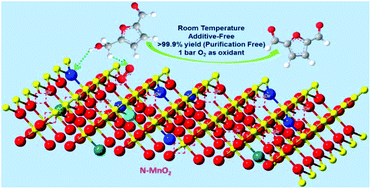
Green Chem., 2019,21, 4313-4318
https://doi.org/10.1039/C9GC01041F
A fully bio-based polyimine vitrimer derived from fructose
A bio-based polyimine vitrimer containing 100% renewable carbon content has been synthesised and characterised, based on bio-based furan dialdehyde derived from fructose.
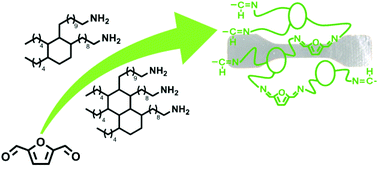
Green Chem., 2019,21, 1596-1601
https://doi.org/10.1039/C9GC00540D
A ppm level Rh-based composite as an ecofriendly catalyst for transfer hydrogenation of nitriles: triple guarantee of selectivity for primary amines
A 49 ppm Rh catalyst selectively transforms nitriles into primary amines with economical HCOOH and exhibits a TOF value of 6803 h−1.
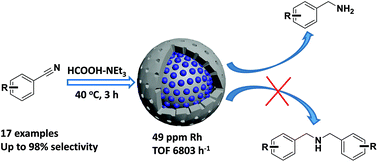
Green Chem., 2019,21, 1390-1395
https://doi.org/10.1039/C8GC03595D
Methylformate from CO2: an integrated process combining catalytic hydrogenation and reactive distillation
Catalyst immobilization in decane and repetitive hydrogenation of CO2 to HCOOH-amine with subsequent reactive distillation of the resulting methanolic solution.
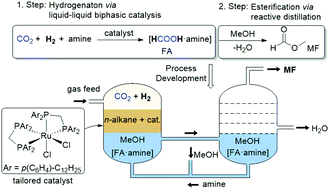
Green Chem., 2019,21, 6307-6317
https://doi.org/10.1039/C9GC03006A
Tailor-made biofuel 2-butyltetrahydrofuran from the continuous flow hydrogenation and deoxygenation of furfuralacetone
In this work, we present the first continuous flow process to produce the tailored biofuel 2-butyltetrahydrofuran from renewable resources.
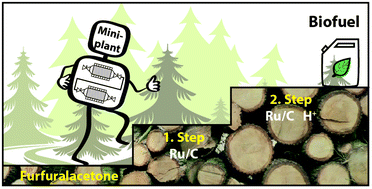
Green Chem., 2019,21, 6299-6306
https://doi.org/10.1039/C9GC02555C
Reaction engineering implications of cellulose crystallinity and water-promoted recrystallization
Mechanical decrystallization and water-promoted recrystallization of cellulose were studied to understand the effects of cellulose crystallinity on reaction engineering models of its acid-catalyzed hydrolysis.
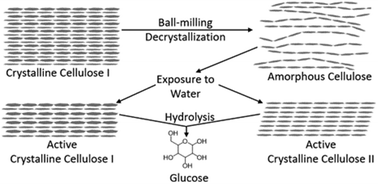
Green Chem., 2019,21, 5541-5555
https://doi.org/10.1039/C9GC02466B
Preparation of synergistically reinforced transparent bio-polycarbonate nanocomposites with highly dispersed cellulose nanocrystals
Sustainable, transparent, and robust bio-polycarbonate nanocomposites are realized by in situ polymerization of isosorbide well-dispersed with cellulose nanocrystals.
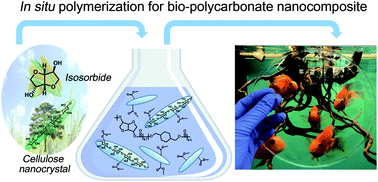
Green Chem., 2019,21, 5212-5221
https://doi.org/10.1039/C9GC02253H
Catalytic hydrogenation of dihydrolevoglucosenone to levoglucosanol with a hydrotalcite/mixed oxide copper catalyst
Levoglucosanol (LGOL) is a critical intermediate for the bio-based production of hexane-1,2,5,6-tetrol, 1,2,6-hexanetriol, and 1,6-hexanediol.
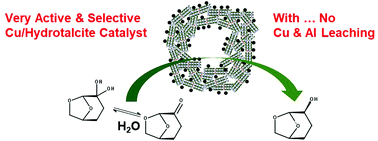
Green Chem., 2019,21, 5000-5007
https://doi.org/10.1039/C9GC00564A
Improving the performance of supported ionic liquid phase (SILP) catalysts for the ultra-low-temperature water–gas shift reaction using metal salt additives
Addition of CuCl to supported ionic liquid phase (SILP) catalysts enhances the activity in the low temperature water–gas shift (WGS) reaction.
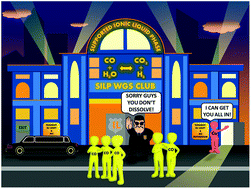
Green Chem., 2019,21, 5008-5018
https://doi.org/10.1039/C9GC02153A
Switching on palladium catalyst electrochemical removal from a palladium acetate–acetonitrile system via trace water addition
Trace water addition drives the electrochemical removal of a Pd catalyst from organic synthesis reaction solutions.
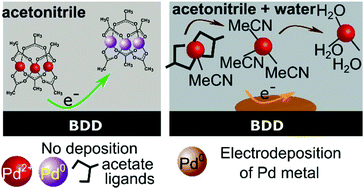
Green Chem., 2019,21, 4662-4672
https://doi.org/10.1039/C9GC02258A
Eco-efficient synthesis of 2-quinaldic acids from furfural
A three-step process to synthesize quinaldic acids from furfural was established.

Green Chem., 2019,21, 4650-4655
https://doi.org/10.1039/C9GC02206F
Biocatalytic retrosynthesis approaches to D-(2,4,5-trifluorophenyl)alanine, key precursor of the antidiabetic sitagliptin
Six chemo-enzymatic routes for the synthesis of a trifluorinated D-phenylalanine have been described and compared, including the first example of a fully biocatalytic D-hydroamination.
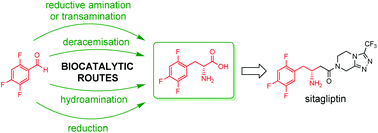
Green Chem., 2019,21, 4368-4379
https://doi.org/10.1039/C9GC01902B
Expedient preparation of active pharmaceutical ingredient ketamine under sustainable continuous flow conditions
Continuous flow preparation of antidepressant ketamine and analogs under sustainable conditions.
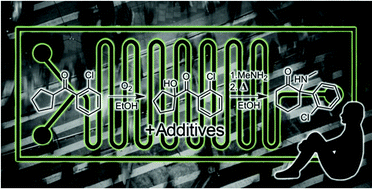
Green Chem., 2019,21, 2952-2966
https://doi.org/10.1039/C9GC00336C
A bifunctional dermaseptin–thanatin dipeptide functionalizes the crop surface for sustainable pest management
A bifunctional dipeptide can help to reduce pesticide use while preserving crop productivity.
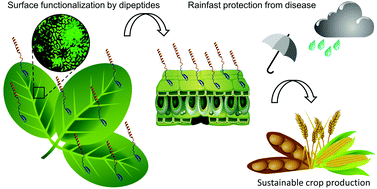
Green Chem., 2019,21, 2316-2325
https://doi.org/10.1039/C9GC00457B
Is oxidation–reduction a real robust strategy for lignin conversion? A comparative study on lignin and model compounds
The enigma of the oxidation–reduction strategy for lignin valorization was disclosed over heterogenous catalysts and was compared with model compound studies.
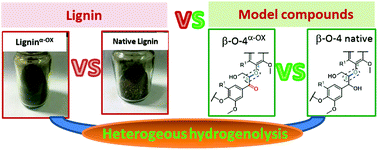
Green Chem., 2019,21, 803-811
https://doi.org/10.1039/C8GC02670J
About this collection
Welcome to our online rolling collection of the hottest work published in Green Chemistry. Here we feature all the 2019 Green Chemistry articles highlighted as HOT by the handling editor or our referees. Congratulations to all the authors whose articles are featured.